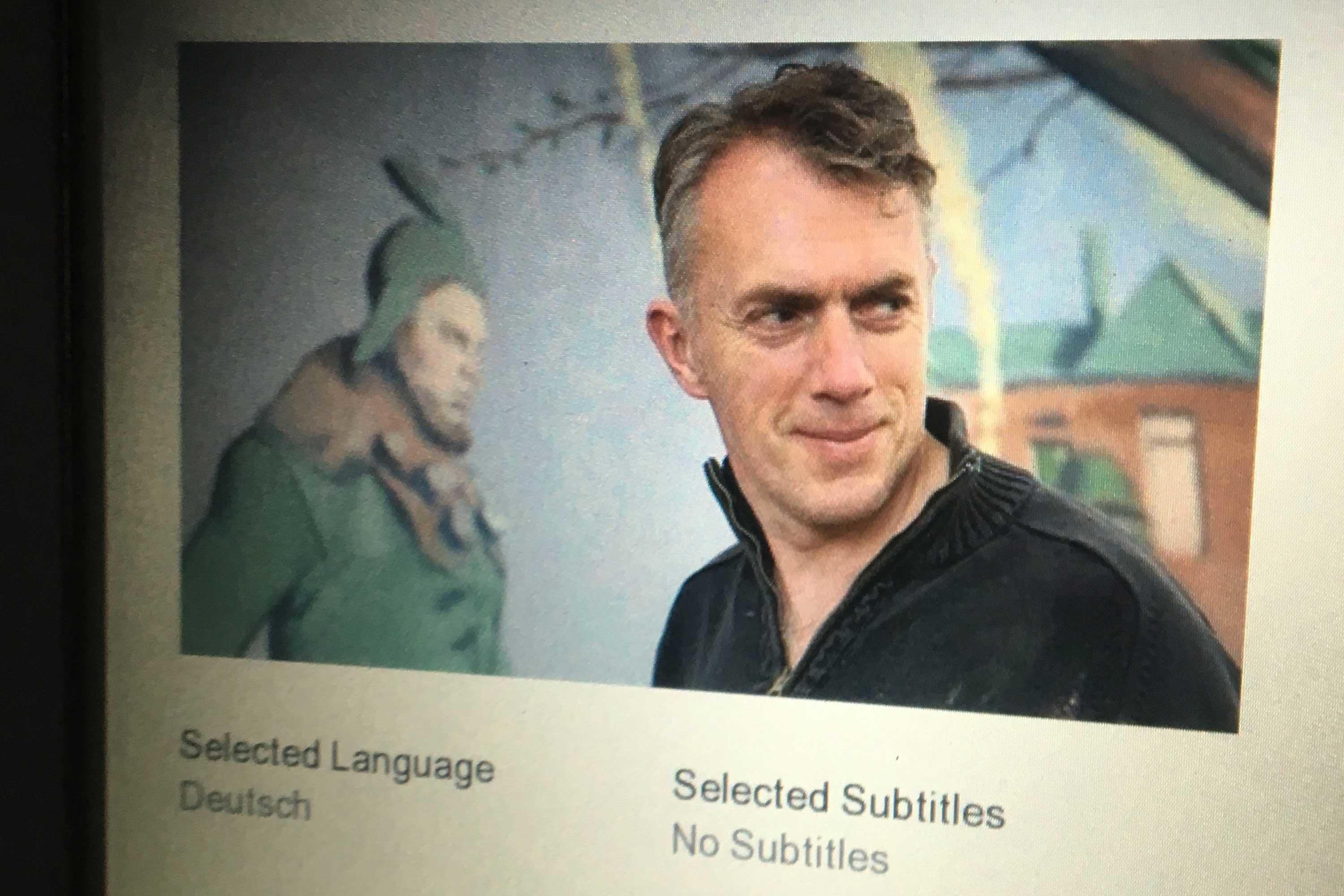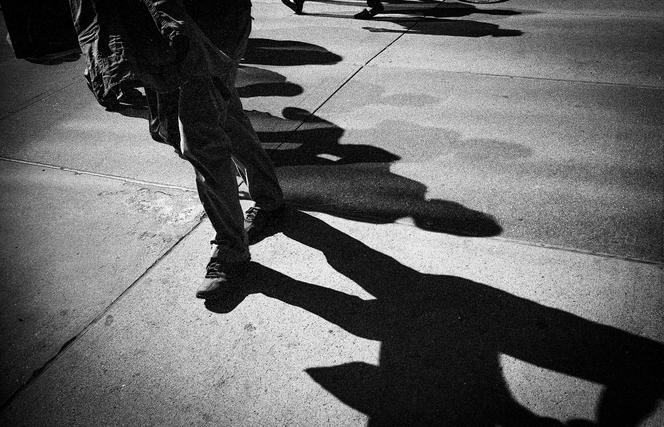
On the flight from Frankfurt to New York the other night I watched just one documentary. Neo Rauch has been one favorite painter for many and for many years now. After watching the film, I like him and his work even more. Not that it matters to the man in any way, or that it matters to anyone, really. But it is good to see someone push through the struggles of life with such visual eloquence as Rauch seems to, giving birth to generations of new figures, connecting them in groupings that invite to a dialogue and mystify at the same time. Some of what happens on the canvasses can be put into words. Some can’t. It only works as what it is: Paintings as paintings.
It was not the first documentary about artists that I have watched on flights, of course. And I should probably be reading instead of watching? Should I be listening perhaps? Or maybe I should meet people and discuss ideas. The creative process comes in many shapes and sizes and the technology used to create something or anything really makes for very different interactions between the creator and the piece ultimately created. There are obviously painters who are more like creative directors, working with teams and using technology to preview the work that is then produced often in a factory-like-setting by people called “hands”. But the romanticism of the individual artist in dialogue with only herself or himself and the canvas or the piece of paper or whatever, that feeling is indeed something really special. The documentary begins with Neo Rauch carrying in a canvas. Asking where all the 30 assistants were hiding. He seems to have none.
No human being exists in a vacuum. Even Caspar Hauser was not really all by himself or able to survive alone and in complete isolation. But being able to separate from the discourse and dive into the private space from which creation happens (or “Schöpfung”, the German word that stands for drawing, creating, summoning up and scooping.) That’s rather important. Separation and the quiet contemplation seem essential. It even seems that boredom, routine and disappointment are essential. The moment (or period) of being displeased with the seeming non-progress of the world, seem essential. The inner drive in search for new paths through the unexplored forces. All of these seem to enable the artist to create. Some obviously don’t create art but instead worries, paranoias, wilderness and for some, a different kind of euphoria.
It seems vital to find an inner space as the starting point of creation. And it seems also vital for it to contain something profoundly injured or flawed. A perfectly happy person will probably not have the need to create anything anyway. A perfectly unhappy person might obviously just feel the need for some sort of destruction or possible some way towards numbness. But it seems that something particularly injured, flawed, the broken and fragile can become the fertile ground for something that leads to some sort of worthwhile creative outcome. The discontent with whatever is there or not enables something new. And that something new is best kept in a pressure cooker and then looped back into the ever-evolving soup of experiences, memories and desires. It’s an often dark place.
The purpose of this kind of creative work seems to be to mend and to heal, to build and to evolve. It seems to have a certain therapeutic quality to it. It seems to then have a “Wert an-sich” or be of value onto itself. It appears satisfying as it appears frustrating. It appears infuriating as it appears healing. It is like a set of notes from a journey that is as holistic as it is personal and intimate.
The creative process for commercial purposes is obviously very different. It happens under very different pressures, it is exposed to completely different forces and it is constantly checked for monetary value, often by entire industrial complexes that layer whatever readout they can get and are still either trying or pretending to understand the formulas of profitable creative work. It is that same machinery that wants to employ AI and data to replace the creative person, just as it eliminated office walls and the elevator operator.
The Neo Rauch documentary by Nicola Graef is quite good at leaving enough room for the viewer to be invited and gently challenged. It’s titled “Gefährten und Begleiter” (Companions and fellows) and we indeed get to know a few people who might fit both. People connected to the artist on a personal level and also some slightly overwhelmed, admiring collectors who at times stuff the work into their intimate living quarters still puzzled by its meaning. The exoticism of something German, something historic and inexplicable seems to connect them all. They are caretakers of these living paintings that will be understood differently by the generations after them. The work is clearly destined to outlive everyone whom we see on camera.
Rauch, the man, could probably inspire a following even if he were just seated in a chair and were to simply talk about the light entering the room. He appears to be a profoundly thoughtful person who can’t stop working and who is in constant dialogue with his creations: an interesting man creating interesting human creations.
It is only towards the end of the film that the deep tragedy of the artist is revealed. His parents, killed in a train accident, live on in stories and pictures of his childhood, then somehow become his imaginary siblings and then shadows turning younger and younger, eventually reemerging as children who never had a chance to reach their full potential. They were killed at the ages 19 and 21. Too young to comprehend where we collectively are today. Some drawings of and by them are the only thing we get to see. It’s about as much as Neo Rauch got to see of them too. His mother, a tiny portrait hung high up in his studio, patiently listening to his pleas. Most of the time answering them. She is supportive.
It seems that creative work that is bound to be of value for humanity the longest is connected to some incredible challenges and perhaps hardships that the collector likes to associate with on a merely mystical level, perhaps more as religious objects that provide some sort of protection against evil spirits. The highway of no resistance leads to hell. The slippery path through the jungle of profound challenges can be turned into true human significance that transcends generations. Louise Bourgeois comes to mind, spending much of her career exploring the dark side of her parents’ relationship to each other, and her own relationship with them. Chuck Close possibly paints bigger because of his catastrophic spinal artery collapse of 1988. There are so many examples of this, and this is not an art history paper.
What Rauch mentions and what seems incredibly important, especially now, is that his motivation is not political. There are days on which it is hard to imagine anything clearly, as the world shouts about one calamity after the other. Staring at the news cycle feels devastating on many levels.
Perhaps another significant requirement for relevant creative work is incredible focus. The same machine that promises high return of investment to those who feed it little snippets of sales-talk, has become so skilled in distracting us that many of us mistake their feed for what used to be reality. Never before have so many had so many friends they know nothing about. Not sure liking something ever meant so little. The feed a self-chosen sugar-drip that is designed to create a favorable sales environment. Dopamine for all. More of it for those who leave on their notifications. The most for the people who master candy crush and two dots.
Creation hurts. Creation is the most magnificent experience known to humans. Creation requires a void that rarely generates itself. The loneliness, the despair, the impossible pain are the doors to something that matters. Creation is at the center of what is relevant for generations after us.
When Rauch is asked about the price of his paintings, he manages to look away from numbers that will, as he points out, evaporate anyway, towards the value. The value of what he does. It’s obviously significant for those who take his work into their custody, but even more so for him as the necessity that takes priority over everything else. Asked why he would not take a break from painting, he answers that he can’t. As soon as he stopped, the world would simply move on. We know it wouldn’t. But for him the process itself is life.
When I look at the circumstances of how I got to see the documentary, it was mainly made possible by the years of focus and creation. I do not think that feeds got me to where I stand today. I am grateful for the few moments when I was pushed to the limits of what I thought possible and beyond. I am grateful for the horrendous implosions and arguments that I somehow managed to survive. I know that whatever is happening now is just a preparation for some incredible and indescribable hardship ahead. But that will be a lesson I will likely eventually again be grateful for. And hopefully something interesting will be created in the process.
I do not wish hardship, loneliness, despair and disappointment onto anyone. But they seem to be necessary facets of any creation. At least of any that matters.

Comments